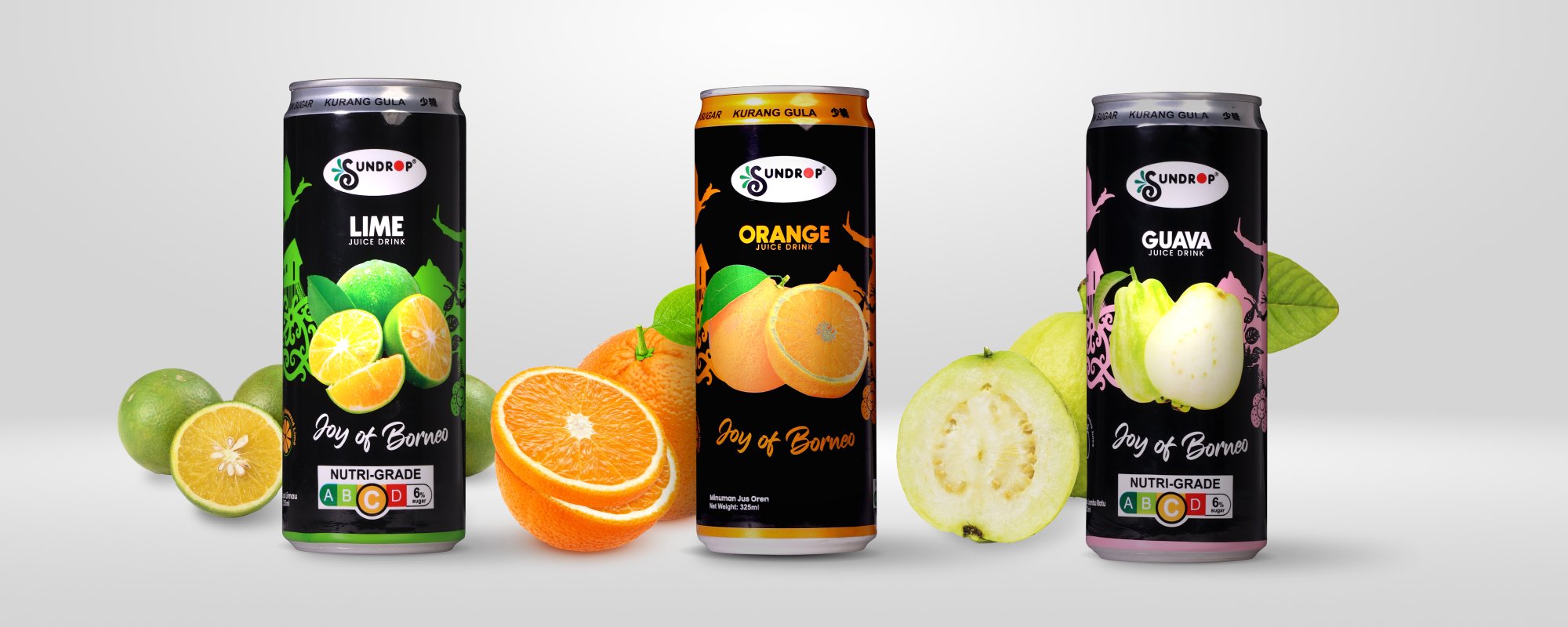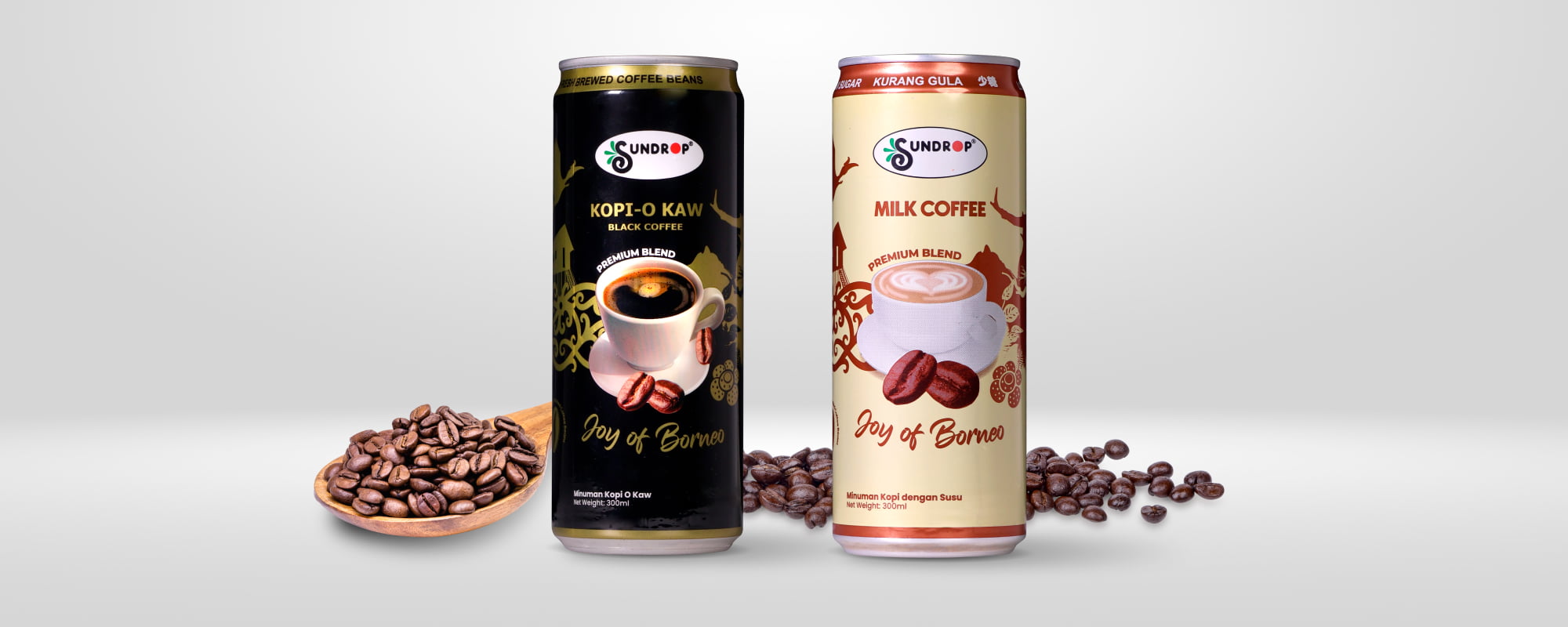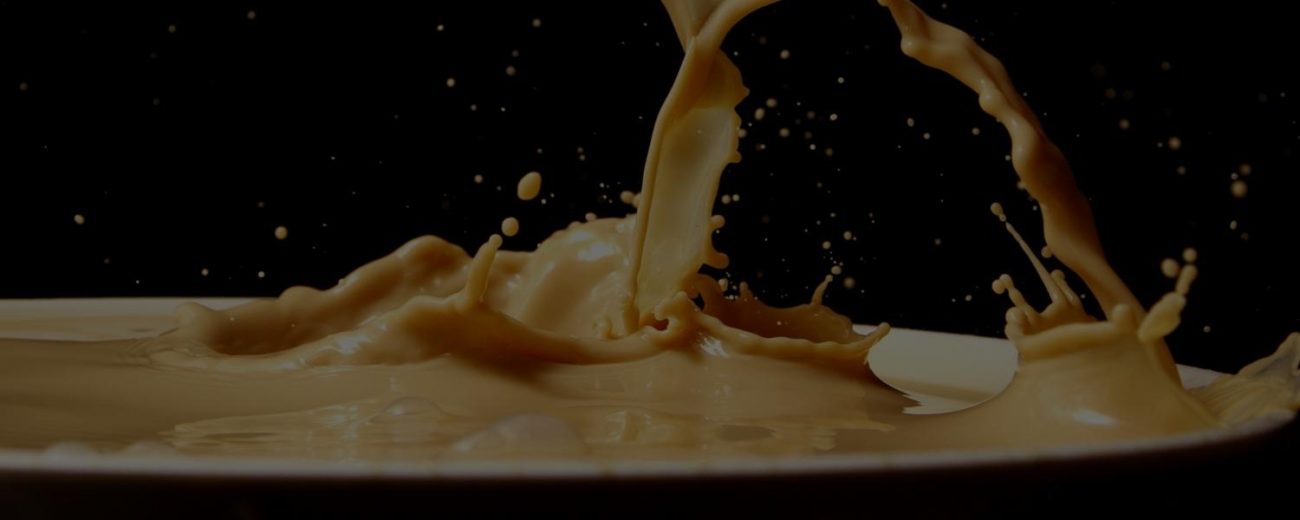All Products
Check out the products that we have to offer.
Guava Juice
Lime Juice
Mango Juice
Orange Juice
The Processes
What is needed to be done to create our drinks?

About Fruit Juices
Fruit juices are healthy products consumed for their essential nutrients, like sugars, vitamins and minerals. The best tasting fruit juices are the freshly squeezed variety and consumed immediately, since the fresh flavours are unstable and tend to either break down on storage or evaporate off on storage. Processed long life fruit juices are consumed when the fresh squeezed variety are unavailable.
(Fruit juices contain essential nutrients like sugars, vitamins and minerals. They will taste the best when its freshly squeezed and consumed immediately but in order to save it from breaking down in storage, these are the three preventative measures; )

Processing of Fruit Juices
Fruit juices are processed mainly by three methods to increase the shelf life:

1.) By concentration
These products are mainly preserved by high concentration of solids. Above 70% solids by volume, bacteria and other food spoilage micro-organisms are unable to grow. However, the negative side is the product needs to be diluted to drink. They may also be too sweet, and juice content may be too low because of all the sugar that needs to be added to reach 70% solids content. Cordials and fruit based mixers fall into this category.
(By concentration ;This means preservation by high concentration of solids. It results in solids of 70% by volume which will prevent growth of bacteria and discourage food spoilage but this means that the product is too sweet because of the increase in the amount of sugar added and it also needs to be diluted to drink.)

2.) Preservatised ready to drink fruit juices
These juices are preserved via addition of preservatives and must be kept chilled at 4c to 10c. Chilled storage is necessary since preservatives by themselves cannot control bacteria growth. The negative side of this method is that even with chilled storage and preservatives the shelf life is restricted to around 60 days. If you check your typical chilled ready to drink juice at a supermarket, check the labels – ingredients like sodium benzoate and sorbic acid are commonly used preservatives. there may be chilled products without preservatives, but these products will have even shorter shelf life, perhaps 15 days to 30 days under chilled storage.
(This is the addition of preservatives and chilling the product to prevent bacteria growth. Ingredients like sodium benzoate and sorbic acid are commonly used as preservatives. The shelf left of these products will be around 60 days and but chilled products without preservatives will be 15-30 days.)

3) Heat treated long shelf life ready to drink juices
With this method, the bacteria and other food spoilage organisms are destroyed using heat, making chilled storage or preservatives unnecessarily. The product can have a shelf life of up to two years low sugar, high juice content is also possible. The negative side of this method is loss of some of the flavours in the juices. However, losses in flavour can be minimised by careful control of the heat treatment and addition of additonal flavours to compensate.
(Exactly as the description says, the bacteria and other food spoilage is destroyed using heat. This method will have the product’s shelf life of up to two years. However there is some loss of flavour but it can be minimised by control of heat treatment and addition of flavours to compensate.)
 Juice Concentrates & Extracts
Juice Concentrates & Extracts
Since fruits are seasonal, manufacture of fruit juices typically use concentrates. These are fruit juices of which 80% of the water has been removed via evaporation and heating, allowing the concentrate to be stored in a smaller place and easily transported to the place of manufacture. Unfortunately, during concentration of the fruit juice, a great deal of the flavour is also lost. A fruit juice that is produced from reconstituted concentrate taste markedly different from the fresh variety.
To overcome this problem, fruit juices processed directly from the squeezed fruit juice instead of concentrate are also available. These are sold under the label ‘NFC’ which stands for ‘Not From Concentrate’.
NFC products are always sold at a premium price since the cost of manufacture and transportation is much higher. To improve quality and taste of processed juices, juice extracts are also used. Juice extracts are natural aromatic compounds which are recovered during the juice concentration process. The extracts consist mostly of very volatile essential oils and are recovered by centrifuge from water condensed from the evaporator. Typically water condensed from the evaporator may contain only 0.1% orange aroma.
Unfortunately because a great deal of flavour is lost during the process of manufacturing concentrates, the taste of the product is significantly different than the fresh variety therefore to compensate for the loss, some manufacturers make fruit juices that are processed directly from the squeezed fruit juice and sold under the label ‘NFC’ which stands of ‘Not From Concentrate’.
NFC are premium products and are not the only ways to improve the quality of the processed juices, juice extracts are also used. These are natural aromatic compounds which are recovered during the concentration process.

Sundrop Coffee
Sundrop Fruit Juices Sdn. Bhd. has decades of experience in the manufacture of ready to drink coffee. We use best quality coffee beans, roasted and blended to perfection, to create our own unique taste. The figure is brewed by our own propriety process and canned using state of the art manufacturing plant to create a premium product for all to enjoy.
Healthy beverage
* Lower in sugar
* Natural ingredients, inlcuding fresh brewed coffee & tea
* No Preservatives
* No artificial colour or flavours
* No transfat

Types of Coffee
Hundreds of varieties of coffees are available but they can generally be divided into two types, ARABICA and ROBUSTA.
Robusta coffee is cheap coffee, mass produced for the general market, including manufacture of Instant Coffee. It is grown in lowland plantations, the trees being stout and robust, hence the name Robusta. Arabica coffee is grown in highland plantations, about 1,500 metres above sea level where lower temperatures and slower growth lead to a coffee with good aroma & smooth taste. Many sub-groups of Arabica coffees, exist, namely, Blue Mountain, Kona, Kilimanjaro, Mandehling, Toraja, to name a few, generally named after their geographical locations.
Flavour and quality of coffee depends on many factors, including grading, processing soil and climate conditions. The very best Arabica coffees are called specialty coffees and is used by high end baristas. It is well known that soil conditions and climate significantly affect coffee flavour. It has even been documented that coffee beans grown on opposite banks of a river in the same plantation has different flavour.

Harvesting & Processing
The ripe fruit of the coffee tree is called a Cherry. It is red or orange in colour, and for specialty coffees, carefully selected before picking. After picking, the pulp must be removed.
For specialty coffees, this is done via a process known as ‘washing’. The picked cherries are either dried and the pulp allowed to peel off, or mechanically removed and the beans soaked in water to allow bacteria to digest the outer layer of the beans or mucilage. This last step is known
as ‘fermentation’ and the bacteria creates enzymes which significantly alter the flavour of the coffee. After ‘fermentation’, the beans are then washed by soaking in water and dried, hence the name ‘washing’. ‘Washing’ can even be done via the digestive juices of animals. The most expensive coffee in the world is Kopi Luwak, in which the coffee bean has been digested and excreted from the Luwak (a type of squirrel in Indonesia). In Thailand, elephants are used for this process.
For mass produced coffee notably Robusta, the skins are removed via drying or mechanically and the fermentation and washing steps are skipped.

Grading of Coffee Beans
Grading of coffee beans is a tedious labour intensive process, whereby defective beans and undersized beans are sorted out. Grading rules vary country by country But generally there is a scale of grade 1 to grade 6. The grades specify the percentage of defective/undersize beans. Grade 1 coffee beans have less than 10 defects per thousand, and anything up to 200 beans per thousand for grade 6.
Defects can be caused by insects and pests, unripe cherries, or damage during storage, transportation and washing. The most serious defect is off colour beans which can be anything from unripe beans harvested, defects in the beans itself, or damage during processing. Off colour beans show up as different colour beans during roasting and greatly affect the final taste of the coffee.

Roasting of Coffee Beans
In order to release its aroma, the raw coffee beans must be roasted. Roasting causes the complex chemical compounds in the coffee beans to change and react with each other, and create the wonderful aroma of coffee . Roasting temperatures can range from 180 ℃ to 240 ℃, and roasting time anything from 10 minutes to 20 minutes. Coffee bean taste changes profoundly with roasting times and temperatures, giving rise to light, medium and dark roasts. Short roasting times at low temperatures lead to light roasts with good aroma and mild, acidic taste. However, there is a risk of under roasting whereby the full coffee aroma is not released. On the other extreme, dark roast gives a strong coffee, but aroma and smoothness may be compromised.

Blending of Coffee Beans
Blending is the mixing of different types of coffee beans to create a unique taste. Blending may be between dark and light roasts of the same type of bean, Robusta with Specialty coffees, or between different types of Specialty coffees. The possibilities are endless but the most common blend is between Robusta and Arabica, with Robusta giving the taste and Arabica the aroma. Specialty coffee shops guard their blend and roast formulas zealously for obvious reasons.

Brewing of Coffee Beans
Many types of aromatic compounds are released during the roasting of coffees. Up to a thousand have been identified by flavourists and some may not be pleasant to taste. The art or technique of coffee brewing is to release the favourable/desirable coffee compounds only and exclude the others that may give rise to off flavour, bitterish or rough taste. Coffee taste
can vary during brewing because of the size of the ground coffee, the extraction times, extraction temperature, and even the pressure of the water passing through the coffee. We can have fine grinded coffee extracted at close to 100℃, giving a strong coffee taste or ‘expresso’. On the other extreme, using cold water soak up to 24 hours and we have a smooth tasting ‘cold brewed coffee’. Countless possibilities exist between the two.
Coffee Production Processes at Our Factory

About Teh Tarik
Teh tarik is Malaysian style tea and literally translates into ‘Pulled Tea”. The typical traditional Malaysian Teh Tarik is prepared by brewing the tea, adding milk and ‘pulling’ the tea by shifting rapidly the contents between two containers, preferably with a distance between the containers like a juggler.
Malaysian Teh Tarik is typified by a strong tea aroma with a rich, creamy milk background.

Why Pull or ‘Tarik’ Tea
The distinctive taste of teh tarik is achieved by pulling the tea before drinking. In pulling the tea, some or all of the below is achieved :
- It creates a foamy tea, enhancing the creaminess of the milk.
- It rapidly cools the tea down to make it easier to consume.
- It creates agitation and assists in enhancing the tea flavour. In technical terms, this is known as ‘Flavour Release’.

Teh tarik is prepared from black tea harvested from the evergreen shrub, Camellia Sinensis. After harvesting, the tea is crushed. Crushing the tea leaves releases enzymes in the tea leaf cells, which reacts on the tea leaves; and develops the distinctive flavour of the tea and turns it dark. The flavour of the tea depends on the degree of fermentation, which is carefully controlled by heating and drying which deactivates the enzymes.
The components of black tea are highly complex, but the main components are caffeine, thobromine theophylline and xanthine which are stimulants and polyphenols. The astrigency and flavours in tea comes from polyphenols, which can make up to 40% of brewed tea. It is believed that the main health benefits of tea comes from the polyphenols, which are strong anti-oxidants and can reduce damage from free redicals on the human body.
Like coffee, tea comes in many grades and prices may vary from USD100 per kg for the best China black tea to as little as USD2 for low grade lowland tea harvested mechanically.
Tea quality depends on many factors, but the main ones are :
- Elevation of tea plantation above sea level
- Soil conditions
- Harvesting methods
- Processing and fermentation
The soil conditions and nutrients determine the concentration of desirable components of the tea. At high elevation, tea grows more slowly and the desirable flavours are therefore concentrated, as compared to lowland tea. Highland teas are also smoother and more aromatic.
Harvesting of the tea is also of primary importance. For best quality tea, only the top 2.5 to 5 centimeters of the plucked tea are the new and tender leaves of the tree, known as ‘Flushes’. Best quality tea is from specific plantations at high elevations, and the ‘Flushes’ are carefully selected and plucked by hand. On the other extreme, we have cheap lowland tea where mechanical harvesters lopped off the top of the trees, including branches to produce so called tea.

Tea Brewing
The eventual flavour of the tea depends greatly on the brewing. Low temperatures below 85cwith long soak times will produce aweakly flavoured tea, the so called ‘english breakfast tea’ . Brew temperature is also lowed by use of teabags or tea sachets. For teh tarik, the stronger flavours, which comes from the essential oils in tea, must be extracted and a temperature of 95c and above must be used. Unfortunately, at higher temperatures, the undesirable flavours especially caffiene and other stimulants are also released. Caffeine is almost insoluble in cold water, and partially soluble in hot water above 90c. Long soak times at high temperature will extract excessive amounts of caffiene. This is evident by the cloudy appearence of the tea when cooled. This cloud is aninsoluble complex of caffiene and other ingredients like cellulose which will precipitate upon cooling. Cloudy or over brewed tea is characterised by a rough, bitterish taste.
The best teh tarik consists of tea which is brewed at elevated temperatures above 95c for short time typically below 5 minutes before excessive caffiene is extracted.

Milk in Teh Tarik
A characteristic of teh tarik is the rich, creamy taste which is achieved by addition of milk and milk fats. Milk alone does not achieve creaminess, it is the milk fats which imparts creaminess. Milk fats is butter, which is a solid at room temperature. When suspended in milk, its high melting point above body temperature makes the beverage taste thick and creamy.
Unfortunately, butter is very expensive. Hence, your coffeeshop teh tarik seldom contains butter to enhance creaminess.
Enter the product known as ‘Filled Milk’. Filled milk is milk in which other fats than butter are added to enhance the fat content. The most commonly used fat is hydrogenated palm kernel oil. Natural palm kernal oil is a liquid at room temperature with a melting point of about 24℃. To increase the melting point to match that of butter at around 35℃, the palm kernal oil is modified via a process known as hydrogenation to make it a solid at room temperature. Hydrogenated palm kernal oil is also a primary ingredient of non-dairy creamer powders. To make it taste buttery, butter flavours, mostly artificial, are added to the hydrogenated palm kernel oil.
Hydrogenation of palm kernel oil apart from solidifying, it also creates transfatty acids, better known as transfats. Transfats are proven to be hazardous to health and its propensity for causing clogged arteries have led it to being banned in most developed countries.
Only naturally occurring, unmodified fats like butter are transfat free.

 Juice Concentrates & Extracts
Juice Concentrates & Extracts